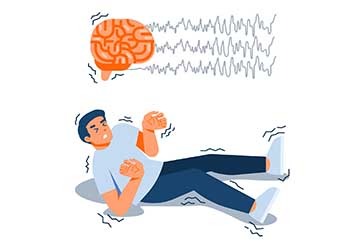 Book Appt.
Book Appt.
 Call Now
Call Now


Spinal cord compression is caused by any condition that causes pressure on the spinal cord. Your spinal cord is a bundle of nerves that transmits messages from your brain to your muscles and other soft tissues. The spinal cord goes down your back and is protected by a stack of backbones known as vertebrae. They also keep your body upright. Your spinal cord's nerves travel through the gaps between the vertebrae to reach your muscles.
Spinal cord compression can happen anywhere from your neck (cervical spine) to your lower back (very top of the lumbar spine). Symptoms include numbness, discomfort, weakness, and loss of bladder and bowel control. Symptoms of compression can appear suddenly or gradually, depending on the reason. They may need everything from supportive care to emergent surgery. If compression gets severe, a disease known as myelopathy may develop. Symptoms of myelopathy include difficulty walking, discomfort, and numbness.
Symptoms
The following are common symptoms:
Causes
These may occur at any age:
Diagnoses
To diagnose spinal cord compression, your healthcare professional will ask you questions about your symptoms and do a thorough physical examination. During the examination, they will check for evidence of spinal compression, such as loss of sensation, weakness, or abnormal reflexes. Tests that assist with your diagnosis may include:
Treatment
Your spinal cord compression may be treated by a medical team that includes arthritis specialists, bone surgeons, nerve specialists, and physical therapists. Treatment is determined on the underlying cause and symptoms. It could include medications, physical therapy, injections, and surgery. Unless there is an emergency, such as cauda equina syndrome or a fractured back, surgery is usually the final option.
Prevention
Many causes of spinal cord compression cannot be avoided. You can help prevent symptoms of spinal cord compression caused by normal wear and tear by keeping your back's muscles and bones as strong and healthy as possible.
Management
The best strategy to manage spinal cord compression is to educate yourself about the illness, collaborate with your healthcare experts and caregivers, and participate actively in your treatment.
Conclusion
Spinal cord compression is a dangerous illness that requires immediate diagnosis and treatment. Understanding the possible causes, recognizing symptoms early, and implementing preventive actions can all help manage and reduce the risks associated with this illness. If you suspect spinal cord compression, see a doctor for a complete examination and a specific treatment plan. For information, visit SHALBY Sanar International Hospitals in Gurugram.
SHALBY Sanar International Hospitals provides extensive medical procedures backed up with our state-of-the-art technology and a team of highly qualified & experienced clinical experts.

Patient from Iraq gets treated by Dr. Harnarayan Singh | SHALBY Sanar International Hospitals

15 year old Patient from Liberia gets treated by Dr Harnarayan Singh | Neurosurgery & Spine Surgery

Mrs. Khalida Khaleel from Iraq Overcomes Degenerative Disc & Grade 1 Spondylolisthesis

Successful Treatment of a Patient from Uzbekistan for Degenerative Disc Disease and Back Syndrome

Surviving Stroke: Bipasha Banerjee's Testimony on Timely Intervention

Successful Intraoperation Neuro Monitoring on patient Hasan from Iraq

Successful removal of Glioma using advanced machines

A multidisciplinary care worked wonders for Ms. Akhtamova from Tajikistan

Treatment for Brain Aneurysm - Al Qumairi Saeed Mohsen Awadh from Yemen
Our doctors pen down their research findings and experiences from time to time. Their words provide deep insight into the latest techniques, technologies and other advancements in healthcare. It provides expert answers to all kinds of health questions for real-life issues.
VIEW ALL




Since the day of its foundation, SHALBY Sanar International Hospitals is committed to provide comprehensive healthcare services. It regularly organizes awareness programs in its premises and encourages outdoor healthcare activities and camps with an intent to put focus on preventive healthcare.
VIEW ALL